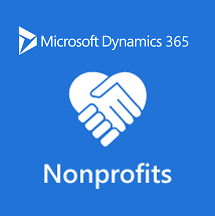Microsoft includes IATI Standard in Non-Profit tools
Dan Lammot at threshold.world talks about using the IATI Standard in Microsoft’s Nonprofit Common Data Model and Dynamics 365 Nonprofit Accelerator tool.
Tell us about your work with Microsoft
Microsoft Tech for Social Impact is committed to ensuring nonprofit organisations have access to technology that can help them achieve the greatest impact as they address the most challenging issues facing our world.
I work for the software company threshold.world and we are partnering with Microsoft Tech for Social Impact. Microsoft Tech for Social Impact is committed to ensuring nonprofit organisations have access to technology that can help them achieve the greatest impact as they address the most challenging issues facing our world.
As a Microsoft Tech for Social Impact Partner, we are proud to be one of many contributors to the Nonprofit Common Data Model and Microsoft Dynamics 365 Nonprofit Accelerator.
What is the Nonprofit Common Data Model and Microsoft Dynamics 365 Nonprofit Accelerator?
The Nonprofit Common Data Model provides a set way of organising data from nonprofit organisations. Much like the IATI Standard, it contains rules about what data is needed, where it should be held and how it is linked to other pieces of data.
By using the Nonprofit Common Data Model, organisations can provide data in a standardised way, ensuring that it can be imported into different tools and systems. Essentially, the model allows for data to be published once and used often.

The Microsoft Dynamics 365 Nonprofit Accelerator is a suite of solutions (including apps, templates, and connectors) that incorporate the Nonprofit Common Data Model, allowing data specific to the nonprofit sector to be added, managed and utilised by any application.
How is the IATI Standard being used?
Microsoft Tech for Social Impact have created an IATI extension (referred to as the IATI add-on) for the Nonprofit Common Data Model and the Nonprofit Accelerator. The IATI add-on allows nonprofits using the Nonprofit Common Data Model to easily report data on their development and humanitarian spending and projects according to the elements and attributes available in the IATI Standard.
Why did Microsoft choose to use the IATI Standard in their nonprofit tools?
The idea and recommendation for the IATI add-on came from nonprofit organisations involved with Microsoft Tech for Social Impact. Given Microsoft’s long-standing engagement with and support for humanitarian programs, Microsoft was grateful for the opportunity to engage with the IATI Technical Team to bring the solution to reality.
Given Microsoft’s long-standing engagement with and support for humanitarian programs, Microsoft was grateful for the opportunity to engage with the IATI Technical Team to bring the solution to reality.
What are the benefits of the IATI add-on?
Using the IATI add-on with the Nonprofit Common Data Model or Nonprofit Accelerator saves organisations time reporting data. They can easily enter, manage, report, export and share data according to the IATI Organisation and Activity Standards.
How can nonprofit organisations start using the IATI add-on?
A great starting point is to explore an overview of the Microsoft Dynamics 365 Nonprofit Accelerator and the Nonprofit Common Data Model which is published on GitHub. Templates and sample apps are available on Microsoft’s AppSource which encourage interoperability, best practices, development of turnkey solutions and deep analytics for nonprofits.
Microsoft's work has the potential to accelerate the adoption of the IATI Standard and increase trust and transparency in the sector.
What can Microsoft Tech for Social Impact bring to the IATI community?
Microsoft's work has the potential to accelerate the adoption of the IATI Standard and increase trust and transparency in the sector. Microsoft Tech for Social Impact’s engagement with nonprofits, partners, industry experts and open initiatives can also help to ensure interoperability data across the sector.
Any future plans for working with IATI?
There are plans to upgrade the software according to the newest version of the IATI Standard (v2.03) and Microsoft is committed to working on new solutions as both the IATI Standard and contributors evolve.